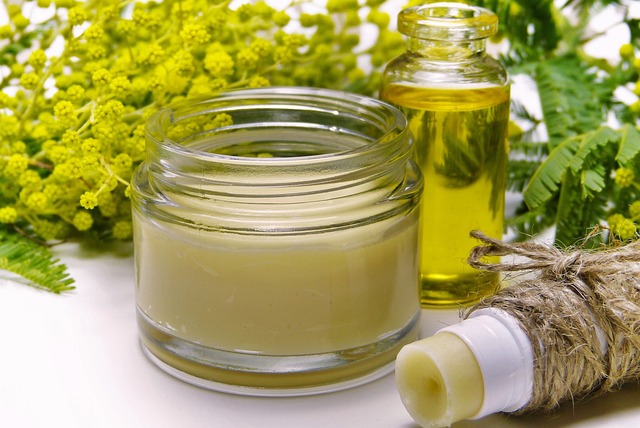Wart freezing treatment, using liquid nitrogen, is a non-invasive, effective method for removing common, plantar, and genital warts. Lasting around a few minutes, sessions target infected cells, clearing them as the immune system takes over. Though temporary discomfort may occur, this procedure offers a safe, efficient alternative to surgery for swift wart removal, suitable for various skin types including those with eczema or psoriasis. Proper aftercare is crucial for optimal results and minimizing side effects.
Discover the comprehensive guide to wart freezing treatment, a versatile solution for all skin types. Understanding this non-invasive procedure offers a lasting solution for warts, regardless of your dermatological background. From learning the science behind it, to navigating the process and managing aftercare, this article breaks down everything you need to know about wart freezing. Uncover the expected results and why it’s a popular choice for effective, long-lasting relief.
- Understanding Wart Freezing Treatment
- Is Wart Freezing Suitable for All Skin Types?
- The Process of Wart Freezing
- Aftercare and Expected Results
Understanding Wart Freezing Treatment
Wart freezing treatment, also known as cryotherapy, is a non-invasive procedure that involves the use of liquid nitrogen to freeze and destroy warts. This method is effective for all skin types, making it a popular choice for treating various forms of warts, including common warts, plantar warts, and genital warts. During the treatment, a healthcare professional applies liquid nitrogen to the wart using a fine needle or spray, causing the wart’s cells to die and fall off over time.
Understanding how wart freezing treatment works is crucial for setting expectations. The process may require multiple sessions, as it takes time for the body’s immune system to recognize and eliminate the infected cells. Each session typically lasts just a few minutes, and while it may cause temporary discomfort or redness, it offers a safe and efficient way to remove warts without surgery. This non-surgical approach is particularly appealing for those seeking swift relief from unsightly warts while avoiding the potential risks and downtime associated with more invasive procedures.
Is Wart Freezing Suitable for All Skin Types?
Wart freezing treatment, also known as cryotherapy, is a popular method for removing warts and has been found to be effective for many skin types. However, its suitability depends on several factors. Generally, it works best on smaller, well-defined warts that are not deeply embedded in the skin. For individuals with sensitive or dry skin, this treatment might need to be approached with caution as the extreme cold can potentially irritate or dry out the skin further.
Despite these considerations, wart freezing has been successfully used on various skin types, including those with conditions like eczema or psoriasis. The key lies in professional administration and proper aftercare. Skilled healthcare providers can tailor the treatment to suit different skin sensitivities, ensuring optimal results while minimizing potential side effects.
The Process of Wart Freezing
The process of wart freezing, or cryotherapy, is a simple yet effective method for treating warts. During this treatment, a healthcare professional applies liquid nitrogen to the affected area, which rapidly freezes and damages the wart’s cells. This disrupts the wart’s growth cycle, causing it to eventually fall off as the body’s immune system clears away the damaged skin. The procedure is quick, usually taking only a few minutes, and can be done in an outpatient setting without any significant downtime.
After the initial freezing session, additional treatments may be necessary to ensure complete elimination of the wart. The healthcare provider will assess the response to treatment and recommend subsequent freezes if needed. It’s important to follow the specialist’s instructions for pre- and post-treatment care, including keeping the treated area clean and dry, to achieve the best results and minimize discomfort or potential side effects.
Aftercare and Expected Results
After successful wart freezing treatment, proper aftercare is essential for optimal results. It’s crucial to keep the treated area clean and dry, avoiding any irritation or re-infection. Over-the-counter pain relievers can be taken if necessary to manage any mild discomfort. In most cases, warts will fall off within a few weeks, but this may vary depending on the size and type of wart.
Expected results include the gradual disappearance of the wart as the frozen tissue dies off and is naturally shed by the body. However, it’s important to note that freezing may not eliminate all warts immediately or permanently. Some individuals may experience temporary redness, swelling, or itching after treatment, but these symptoms typically subside within a week or less. It’s recommended to follow up with a healthcare provider if the wart persists or shows signs of infection.
Wart freezing treatment offers a comprehensive solution for individuals seeking to eliminate warts effectively, regardless of their skin type. By understanding the process and its benefits, you can take confident steps towards achieving smooth, wart-free skin. This non-invasive procedure has proven successful across various skin types, making it a versatile option. With proper aftercare, most people experience positive results, leaving them with clear, healthy skin. Embracing wart freezing treatment is a step towards embracing confidence and a wart-free lifestyle.
